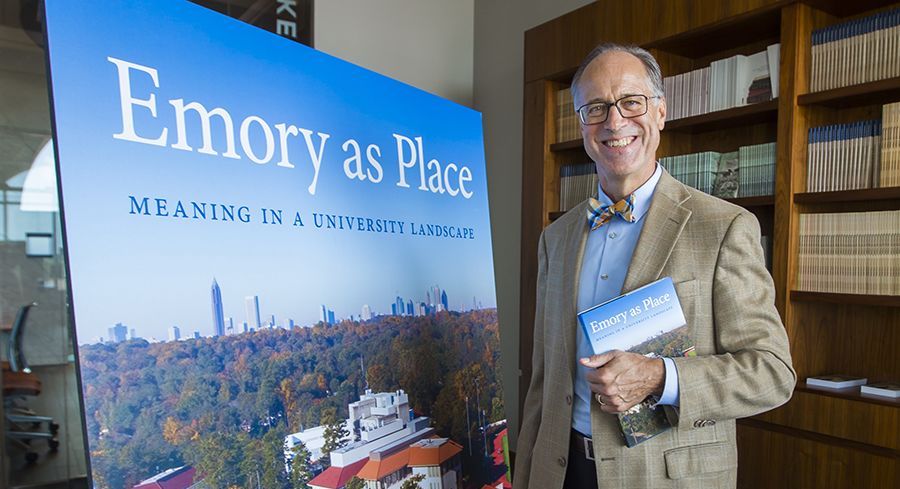Gary Hauk Receives GHRAC Award for Excellence in Research
By CSLR | Emory Law | Oct 19, 2020 12:10:00 AM

On October 15th, 2020, CSLR Senior Editor Dr. Gary S. Hauk received the "Excellence in Research Using the Holdings of an Archive" award by the Georgia Historical Records Advisory Council for his new book Emory as Place: Meaning in A University Landscape.
Gary has been a pillar of the Emory community for thirty years and is the university’s renowned Historian Emeritus. He is senior editorial consultant at CSLR and a longtime board member and officer of Georgia Humanities. In addition to his most recent, award-winning, book — Emory as Place: Meaning in A University Landscape — Gary is the author of A Legacy of Heart and Mind: Emory since 1836 and Religion and Reason Joined: Candler at One Hundred. A recent web-feature, "Opening Doors (and more): The Storied Career of Gary Hauk," outlines his important role in the Emory community.
The Georgia Historical Records Advisory Council (GHRAC) was created in 1993 to ensure that Georgians of all ages are made aware of the significant historical records located statewide, enhances the preservation and care of these treasures, and improves the access that Georgians have to their records.
Read more about the award-winning book Emory as Place: Meaning in A University Landscape below:
Universities are more than engines propelling us into a bold new future. They are also living history. A college campus serves as a repository for the memories of countless students, staff, and faculty who have passed through its halls. The history of a university resides not just in its archives but also in the place itself—the walkways and bridges, the libraries and classrooms, the gardens and creeks winding their way across campus.
To think of Emory as place, as Hauk invites you to do, is not only to consider its geography and its architecture (the lay of the land and the built-up spaces its people inhabit) but also to imagine how the external, constructed world can cultivate an internal world of wonder and purpose and responsibility—in short, how a landscape creates meaning. Emory as Place offers physical, though mute, evidence of how landscape and population have shaped each other over decades of debate about architecture, curriculum, and resources. More than that, the physical development of the place mirrors the university’s awareness of itself as an arena of tension between the past and the future—even between the past and the present, between what the university has been and what it now purports or intends to be, through its spaces. Most of all, thinking of Emory as place suggests a way to get at the core meaning of an institution as large, diverse, complex, and tentacled as a modern research university.
Buy from UGA Press | Amazon | Barnes & Noble

